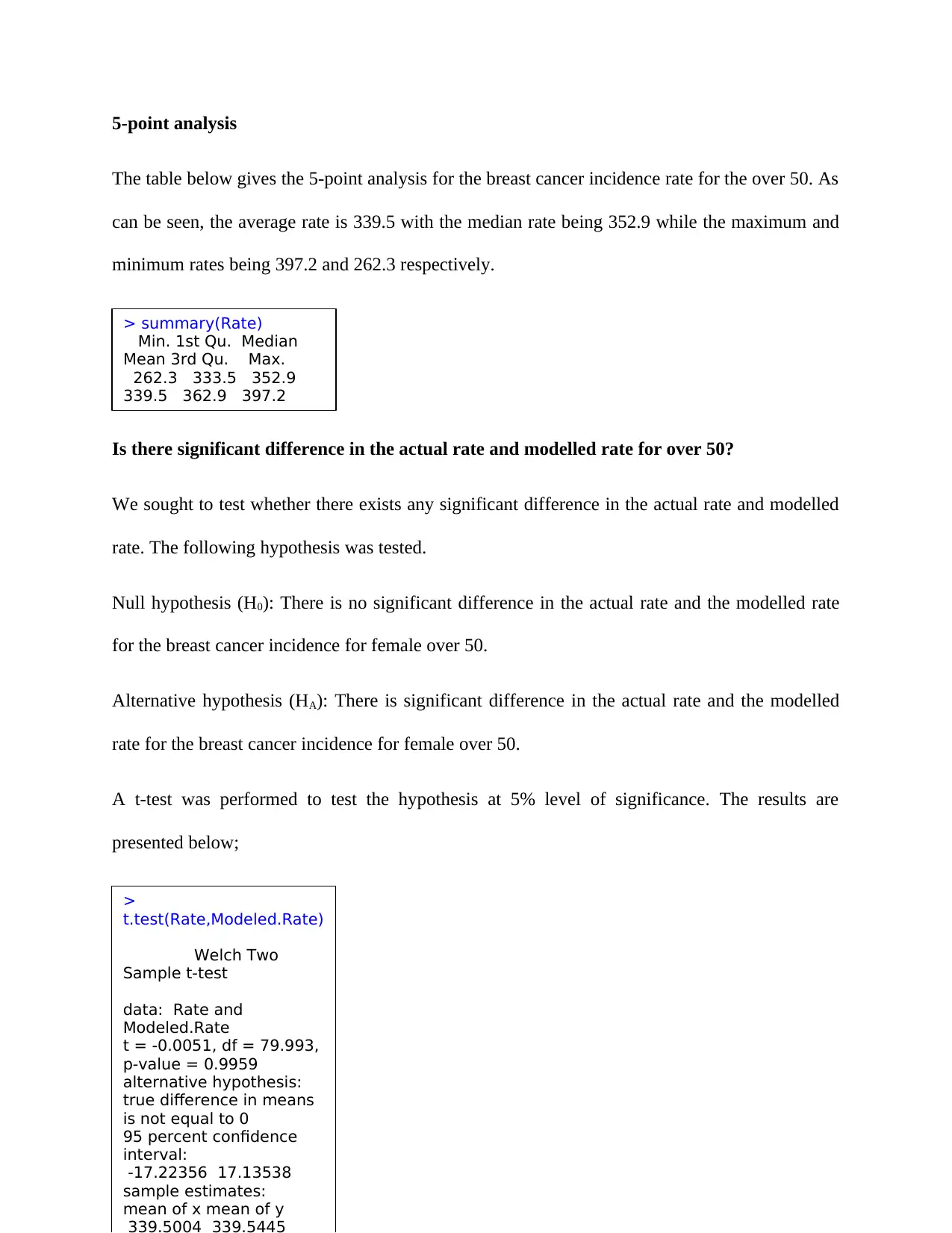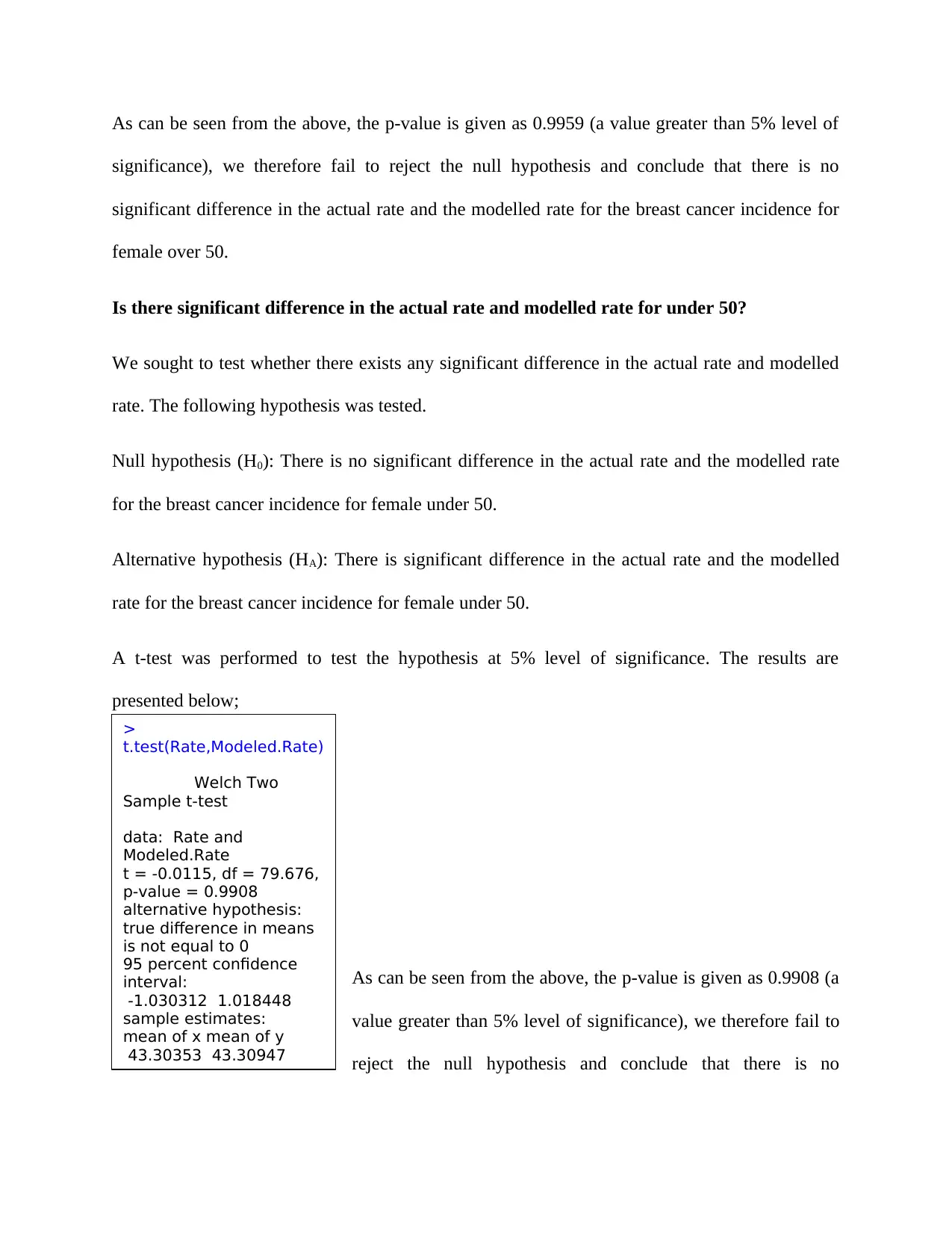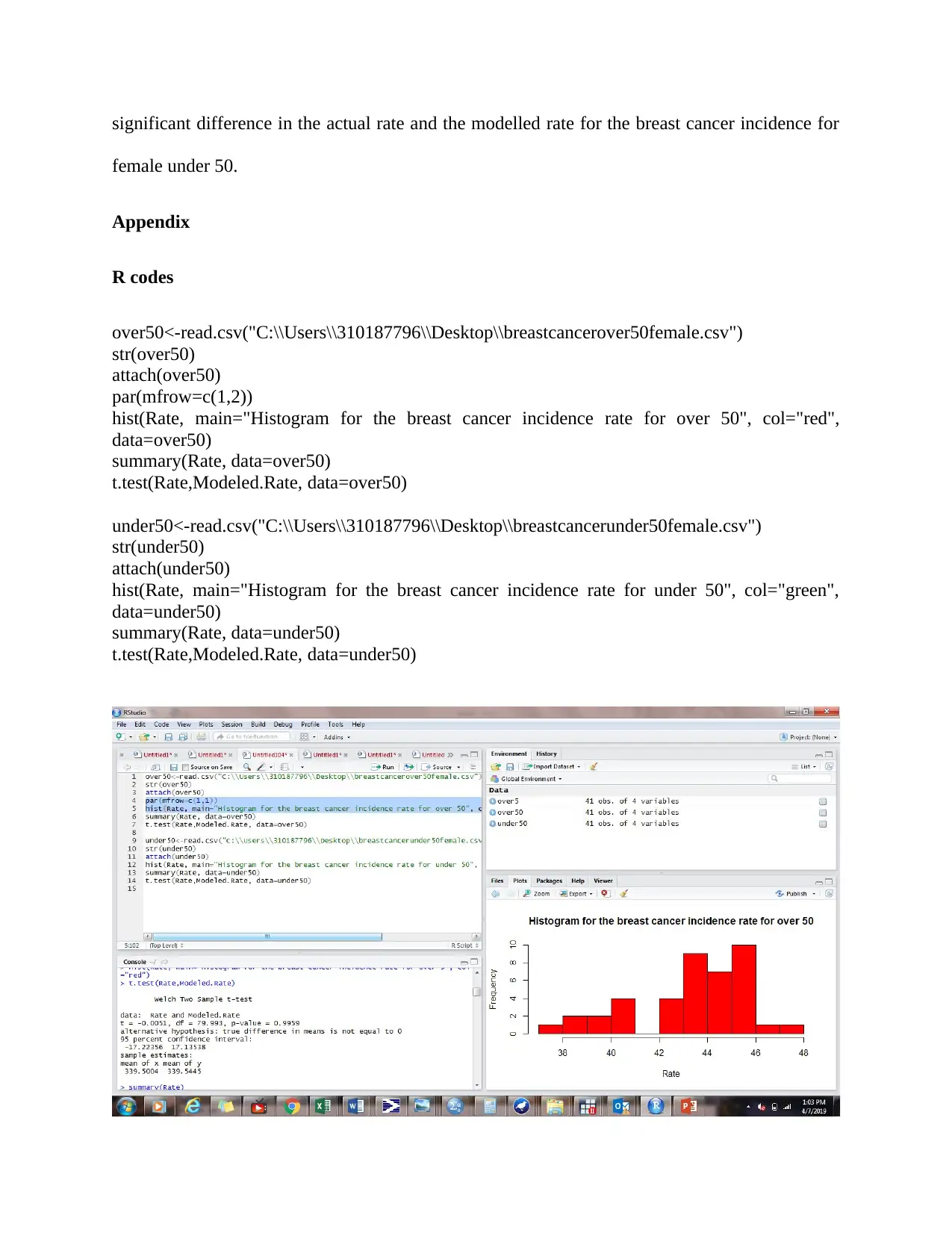Analysis of Breast Cancer Incidence Rates: Math 186 Project
VerifiedAdded on 2023/01/17
|6
|759
|22
Project
AI Summary
This project presents a statistical analysis of breast cancer incidence rates for females over and under 50 years old. The analysis begins with descriptive statistics, including histograms to visualize the data distribution and 5-point summaries to understand central tendency and spread. The project then investigates whether there is a significant difference between the actual and modeled breast cancer incidence rates for both age groups using t-tests. The null and alternative hypotheses are clearly defined, and the results of the t-tests, including p-values, are presented and interpreted at a 5% significance level. The project concludes by failing to reject the null hypotheses for both age groups, indicating no significant difference between the actual and modeled rates. The R code used for the analysis, including data import, histogram generation, summary statistics, and t-tests, is provided in the appendix. The project follows the guidelines of a Math 186 final project, emphasizing data organization, statistical terminology, and hypothesis testing.
1 out of 6













![[object Object]](/_next/static/media/star-bottom.7253800d.svg)